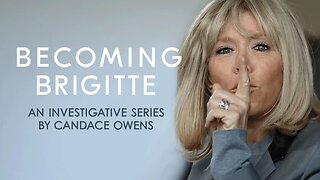Premium Only Content

Gen Z takes Halloween parties more seriously than millennials
Gen Z takes Halloween parties more seriously than millennials, according to new research.
A survey of 1,000 Gen Z and 1,000 millennials who celebrate Halloween revealed that between the scares and the snacks, 42% of Gen Zers take these parties “very seriously”, compared to 34% of millennials.
Overall, the top three elements for a great Halloween party include the costumes (63%), the food (61%) and the decorations (50%).
When selecting a costume, respondents weigh if it needs to coordinate with group costumes (52%), if others will understand it (51%), and whether or not the food will mess up their makeup or face paint (46%).
Two-thirds (67%) of Gen Z are looking for candy, compared to only 43% of millennials. In fact, over half of Gen Zers put a lot of their effort into curating the perfect candy bowl.
Almost two-thirds (62%) of all respondents would be disappointed if they attended a Halloween party that didn’t have candy, though Gen Zers are more likely to be “very disappointed” than millennials (30% vs 20%).
Conducted by OnePoll on behalf of HI-CHEW, results also revealed that respondents are hoping to snack on fruity (61%), chewy (59%) and chocolatey candy (57%) the most.
Respondents are also hoping to snack on themed treats like “bloody” fruit punch (60%) or candy apples (54%).
In addition, decorations are especially important to Gen Z, as 61% believe they can make or break the event, compared to only 40% of millennials.
Respondents hope to see skeletons (63%), witches (59%), cobwebs and fake spiders (59%), Jack O’Lanterns (57%), and bats (57%) at every turn. Black cats (27%) and candles (25%) are considered outdated decor.
Millennials are bored of haunted houses (26%) and cobwebs (22%), and 16% of Gen Z share the same sentiment about witches. However, two in five (38%) Gen Zers reported that no decorations are better left in the past compared to only 15% of millennials.
“Candy and snacks are essential when hosting Halloween parties. Attendees have shown that candy and snacks are an important factor,” said Teruhiro Kawabe (Terry), chief representative for the USA & President, CEO of Morinaga America, Inc. “Whether your guests prefer fruity and chewy or bite-size and chocolate, the choice of candy can make or break your gathering.”
A little more than two in five (41%) admit that ruining their costume or makeup can cause them to head home early.
Two-thirds of respondents believe that they have what it takes to win a costume contest — and another 70% say that it is imperative their costume remains perfect for the duration of the party.
In fact, most respondents will go so far as to include touch-ups throughout the event (57%) and even avoid eating messy foods (52%).
And in the event that someone else is sporting the same costume, one-quarter of respondents are likely to make a joke about it. But on the other hand, another 22% admit they’d be upset about it, especially if the other person wore the costume better.
Millennials are more likely to be embarrassed about wearing the same costume (12% vs 9%).
But Gen Z seems to buy into the idea that imitation is a form of flattery and would take it as a compliment (19% vs. 5%).
When asked the best costume they’ve ever worn or seen, respondents outlined things like, "a rat with a bucket of cheese,” “an evil mermaid” and even “a gallon of chocolate milk.”
“What’s Halloween without the perfect costume?” proposed Kawabe. “When attending a Halloween party, it’s important to consider how the costume will compliment your experience – if you need to eat mess-free snacks, if it is unique, or if you’re going with a group.”
Survey methodology:
This random double-opt-in survey of 1,000 Gen Z and 1,000 millennials who celebrate Halloween was commissioned by HI-CHEW between September 8 and September 23, 2023. It was conducted by market research company OnePoll, whose team members are members of the Market Research Society and have corporate membership to the American Association for Public Opinion Research (AAPOR) and the European Society for Opinion and Marketing Research (ESOMAR).
-
 1:19
1:19
SWNS
9 days agoStudy reveals men bigger fans of romance than women
27 -
 58:33
58:33
Man in America
19 hours agoFluoride & the Sinister Plot to Poison Us From Birth w/ Larry Oberheu
81.8K25 -
 3:41:30
3:41:30
I_Came_With_Fire_Podcast
20 hours ago🔥USAID SCANDAL | MA-GAZA | Cartel VIOLENCE Ramps Up🔥
78.9K10 -
 7:57:34
7:57:34
SpartakusLIVE
14 hours agoShadow BANNED, but we PARTY ON || Friday Night HYPE
74.2K2 -
 2:00:53
2:00:53
Omar Elattar
12 hours agoGRANT CARDONE: “Will I Run for Governor?” | Trump EXPOSED | Bitcoin | $500 Billion Crisis!
50.9K14 -
 46:48
46:48
Glenn Greenwald
15 hours agoGlenn Takes Your Questions On Gaza, USAID, and More | SYSTEM UPDATE #403
91.8K78 -
 56:42
56:42
Candace Show Podcast
19 hours agoBecoming Brigitte: One Coincidence Too Many | Ep 3
178K206 -
 3:14:38
3:14:38
Nerdrotic
19 hours ago $19.24 earnedDisney Plus's Complete FAILURE! Fantastic Four Trailer, MCU Phase 5 Reveal | Friday Night Tights 340
156K46 -
 1:00:58
1:00:58
The StoneZONE with Roger Stone
14 hours agoWill RINOs Sink Robert F. Kennedy Jr.'s Confirmation? | The StoneZONE w/ Roger Stone
45.5K8 -
 1:15:19
1:15:19
Edge of Wonder
16 hours agoReal Biochip Implants & Havana Syndrome Exposed: Interview With Jesse Beltran
36.6K13